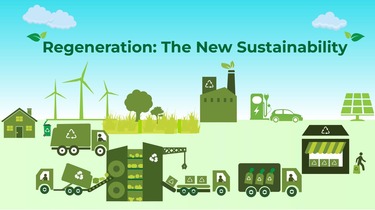
The human race has been prevailing for decades on planet earth. They’ve given a fine purpose to prominent resources and have been consuming resources over the period to strive for a flourishing life. Yet with time, consumption of certain resources has barred the scope of using that conventional resources again. For instance, consider a piece of land being used to produce a particular crop with the heavy application of chemical-based fertilizers that diminish the level of prosperity of the land. Apart from the human race being the basic consumer of prevailing resources, the manufacturing industry is the key impacting source that affects the environment at a recurring rate.
Industrial disposes, and extractions increase the level of intoxication in the environment. Emissions of radiation do contribute to raising the level of global warming. Certain problems do lead to problems like ozone depletion. Manufacturing industries have been working for decades to provide their goods as services. The sole manufacturing process does contribute to affecting the current state of toxicity in the environment.
4R’s and Regeneration
What are the 4R’s of sustainability? The concept of 4R emphasizes the phenomenon of accepting and following the 4R rule, denoted as reuse, recycle, reduce and recover. This rule is oriented towards neutralizing the prevailing condition of the environment. The manufacturing sector working at large scales is expected to opt for the following rule to diminish waste extraction. By taking notes from the phenomenon of 4R, manufacturing industries can adopt a healthy way of executing their procedures by leaving less impact on the environment.
Nowadays, industries are inclined towards an additive approach, which reflects that industries are opting for more options of easement or better technology to flourish the quality of their respective product or services. Yet aside from this additive approach, manufacturing industries should rely on the subtractive approach of eliminating down types of machinery that affect the quality of the environment. This shift from an additive to a subtractive approach can greatly impact. Secondly, the industry’s reliance on capital-intensive dependence to labor-intensive dependence can also be a legitimate factor in improving the quality of the environment. Both approaches are quite progressive to be adapted by manufacturing industries. Adapting these approaches can improve the quality of industries and refine their image in front of their concerned stakeholders.
Sustainable Regeneration: What is it, and why is it better?
Regenerative sustainability is a phenomenon targeted toward making amends and introducing practices that would cut the cost and effect of elements that affect the environment due to their use. For instance, eliminating the use of machinery that produces gigantic amounts of radiation could be deceptive, and manufacturing industries should adopt nature-friendly approaches. Regenerative sustainability is a crucial step that prevailing manufacturing industries should adopt.
Sustainable Regeneration refers to bringing prevailing resources in a recovered form and using them efficiently without causing a major impact on the environment. Sustainable Regeneration demands the shift of manufacturing industries from ‘mechanist’ orientation to ‘ecological’ orientation. The ecological orientation is a focused plan for manufacturing industries to carry forward their production so that it doesn’t affect air quality, water resources, and other environmental factors. On the other hand, mechanist orientation is quite capitalistic and targeted towards flourishing the supply and demand spectrum or production basis of their respective manufacturing industries.
Sustainability vs. Regeneration
Regenerative sustainability initiative is a wide spectrum. Sustainability and Regeneration hold a different place in this domain. On one side, sustainability aims at saving prevailing resources for a future generation, while on the other hand, Regeneration is all about restoring prevailing resources in a useful manner. The basic aim of both terms are the same, yet the way of execution differs.
Initially, sustainability was considered by many manufacturing industries to contribute to bettering the position of the environment. Yet with time, the impact and need for change fade away. With time, the alarming need to put environmental situation bove everything arises.
According to a survey, nearly 88% of manufacturing industries prioritize sustainable and regenerative manufacturing orientation. Certain choices reflect that industries are taking active or passive initiatives to make their existing surrounding a better place to strive in. The regenerative approach is the need for an hour. The crucial approach is to sustain the remaining resources efficiently.
To conclude what has been mentioned above, regenerative sustainability is an appreciative approach that emphasizes regenerating prevailing resources while keeping a sustainable motive ahead. In today’s time, manufacturing industries are getting aware of the environmental situation and taking progressive measures to stay compliant with the existing standards. From contemporary sustainability to regenerative sustainability, manufacturing industries have been developing their mindset around the spectrum and working coordinatively by cutting the cost and effect of toxic reflecting pieces of machinery.
functioning of the particular mode of working. Rules and regulations also provide a certain set of privileges and ease in certain matters.




